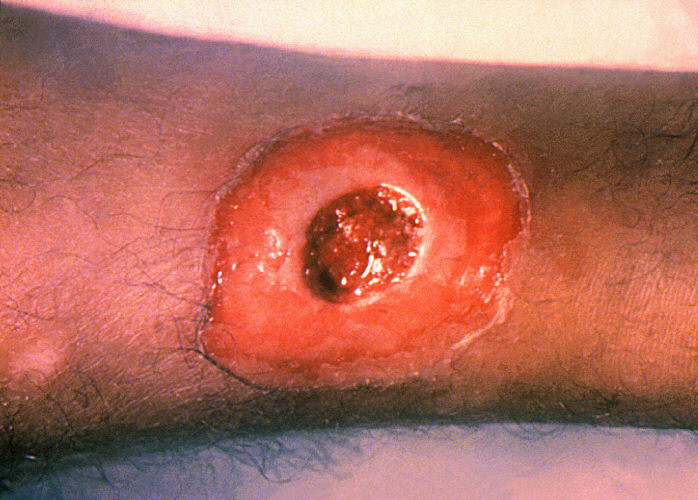Diphtheria history and symptoms: Difference between revisions
No edit summary |
|||
| Line 2: | Line 2: | ||
{{Diphtheria}} | {{Diphtheria}} | ||
{{CMG}} | {{CMG}} | ||
==History and Symptoms== | ==History and Symptoms== | ||
Revision as of 16:31, 5 December 2012
|
Diphtheria Microchapters |
|
Diagnosis |
|---|
|
Treatment |
|
Case Studies |
|
Diphtheria history and symptoms On the Web |
|
American Roentgen Ray Society Images of Diphtheria history and symptoms |
|
Risk calculators and risk factors for Diphtheria history and symptoms |
Editor-In-Chief: C. Michael Gibson, M.S., M.D. [1]
History and Symptoms
The incubation period of diphtheria is 2–5 days (range, 1–10 days).
Disease can involve almost any mucous membrane. For clinical purposes, it is convenient to classify diphtheria into a number of manifestations, depending on the site of disease.
Anterior Nasal Diphtheria
The onset of anterior nasal diphtheria is indistinguishable from that of the common cold and is usually characterized by a mucopurulent nasal discharge (containing both mucus and pus) which may become blood-tinged. A white membrane usually forms on the nasal septum. The disease is usually fairly mild because of apparent poor systemic absorption of toxin in this location, and it can be terminated rapidly by antitoxin and antibiotic therapy.
Pharyngeal and Tonsillar Diphtheria
The most common sites of diphtheria infection are the pharynx and the tonsils. Infection at these sites is usually associated with substantial systemic absorption of toxin. The onset of pharyngitis is insidious. Early symptoms include malaise, sore throat, anorexia, and low-grade fever. Within 2–3 days, a bluish-white membrane forms and extends, varying in size from covering a small patch on the tonsils to covering most of the soft palate. Often by the time a physician is contacted, the membrane is greyish-green, or black if bleeding has occurred. There is a minimal amount of mucosal erythema surrounding the membrane. The membrane is adherent to the tissue, and forcible attempts to remove it cause bleeding. Extensive membrane formation may result in respiratory obstruction. The patient may recover at this point; or if enough toxin is absorbed, develop severe prostration, striking pallor, rapid pulse, stupor, and coma, and may even die within 6 to 10 days. Fever is usually not high, even though the patient may appear quite toxic. Patients with severe disease may develop marked edema of the submandibular areas and the anterior neck along with lymphadenopathy, giving a characteristic “bullneck” appearance.
Laryngeal Diphtheria
Laryngeal diphtheria can be either an extension of the pharyngeal form or can only involve this site. Symptoms include fever, hoarseness, and a barking cough. The membrane can lead to airway obstruction, coma, and death.
Cutaneous (Skin) Diphtheria

In the United States, cutaneous diphtheria has been most often associated with homeless persons. Skin infections are quite common in the tropics and are probably responsible for the high levels of natural immunity found in these populations. Skin infections may be manifested by a scaling rash or by ulcers with clearly demarcated edges and membrane, but any chronic skin lesion may harbor C. diphtheriae along with other organisms. Generally, the organisms isolated from recent cases in the United States were nontoxigenic. The severity of the skin disease with toxigenic strains appears to be less than in other forms of infection with toxigenic strains. Skin diseases associated with nontoxigenic strains are no longer reported to the National Notifiable Diseases Surveillance System in the United States. Other sites of involvement include the mucous membranes of the conjunctiva and vulvovaginal area, as well as the external auditory canal.